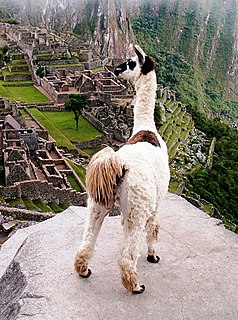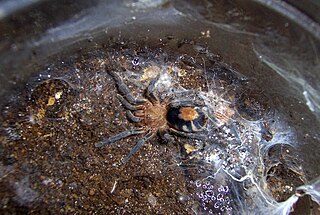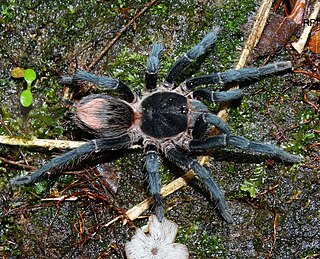
Euathlus is a genus of South American tarantulas that was first described by Anton Ausserer in 1875. It is a senior synonym of Paraphysa, and was formerly considered a senior synonym of Brachypelma, but this was later rejected.

Tarantulas comprise a group of large and often hairy spiders of the family Theraphosidae. Currently, 1,010 species have been identified. The term "tarantula" is usually used to describe members of the family Theraphosidae, although many other members of the same infraorder (Mygalomorphae) are commonly referred to as "tarantulas" or "false tarantulas". Some of the more common species have become popular in the exotic pet trade. Many New World species kept as pets have setae known as urticating hairs that can cause irritation to the skin, and in extreme cases, cause damage to the eyes.
Neischnocolus is a genus of spiders in the family Theraphosidae. It was first described in 1925 by Petrunkevitch. The genus Ami was separately described in 2008, but was later discovered to be a junior synonym of Neischnocolus. Species are native to Central America and northern South America.

Pichu Pichu or Picchu Picchu is an inactive eroded volcano in the Andes of Peru. It is located in the Arequipa Region, Arequipa Province, on the border of Pocsi and Tarucani districts. Pichu Pichu reaches a height of 5,664 metres (18,583 ft) and is part of Salinas and Aguada Blanca National Reserve.

Peru has some of the greatest biodiversity in the world. It belongs to the select group of mega diverse countries because of the presence of the Andes, Amazon rainforest, and the Pacific Ocean. It has the fourth-most tropical forests of any country and the ninth-most forest area.

Cyriocosmus is a genus of tarantulas that was first described by Eugène Louis Simon in 1903.

Brachypelma albiceps is a species of spider in the tarantula family, Theraphosidae. It is known as the Mexican golden red rump tarantula or the Amula red rump tarantula. The carapace is a light golden color and the abdomen dark, covered with long red hairs. Females typically live for about 15 years. Males usually live about 5 years or up to 12 months after the last molt.
The Theraphosinae are a large subfamily of Mygalomorphae spiders in the family Theraphosidae found in the Neotropical realm.
Hapalotremus is a genus of South American tarantulas in the Theraphosinae subfamily that was first described by Eugène Louis Simon in 1903. They have red or white Type III urticating hairs, up to 1.2 millimetres (0.047 in), with a fine point and barbs along at least half of the lower part. The tibial apophysis is branched twice, and there is a conspicuous subapical keel on the male's embolus.
Hapalotremus major is a species of tarantula, in the subfamily Theraphosinae. It is native to Peru.
Bistriopelma is a genus of spider, being a theraphosine theraphosid (tarantula). It has two species as of February 2016, both of which are found in Peru.
Bistriopelma lamasi is a species of theraphosine tarantula, which is native to Peru.
Neostenotarsus is a genus of theraphosid spider, in the Theraphosinae subfamily. It is native to French Guiana. It is monotypic, the only species being Neostenotarsus scissistylus.
Kochiana is a monotypic genus of Brazilian tarantulas containing the single species, Kochiana brunnipes. It was first described by C. L. Koch in 1841 under the name "Mygale brunnipes", and was transferred to its own genus in 2008. As of April 2020, it has only been found in Brazil.

Thrixopelma is a genus of South American tarantulas that was first described by Günter E. W. Schmidt in 1994.

Homoeomma is a genus of South American tarantulas that was first described by Anton Ausserer in 1871. It is considered a senior synonym of Calopelma, Butantania, and of Cyclothoracoides.
Lasiodorides is a genus of South American tarantulas that was first described by Günter E. W. Schmidt & B. Bischoff in 1997.
Magnacarina is a genus of spiders in the family Theraphosidae. It was first described in 2016 by Mendoza, Locht, Kaderka, Medina & Pérez-Miles. As of 2017, it contains 4 species.
Rick C. West is a Canadian arachnologist with a main expertise toward tarantula spiders. West was born in Victoria, British Columbia. He has been interested in spiders since childhood, and collected his first tarantula, Aphonopelma eutylenum at the age of 13. He worked primarily as a Chief Constable for a local Animal Humane Society, but also have been involved with the collecting, breeding, rearing and photography of theraphosid spiders. West has traveled to over 27 countries to document and study them in their environment, has been a host, presenter and co-producer in several tarantula documentaries and has also described several new species.







